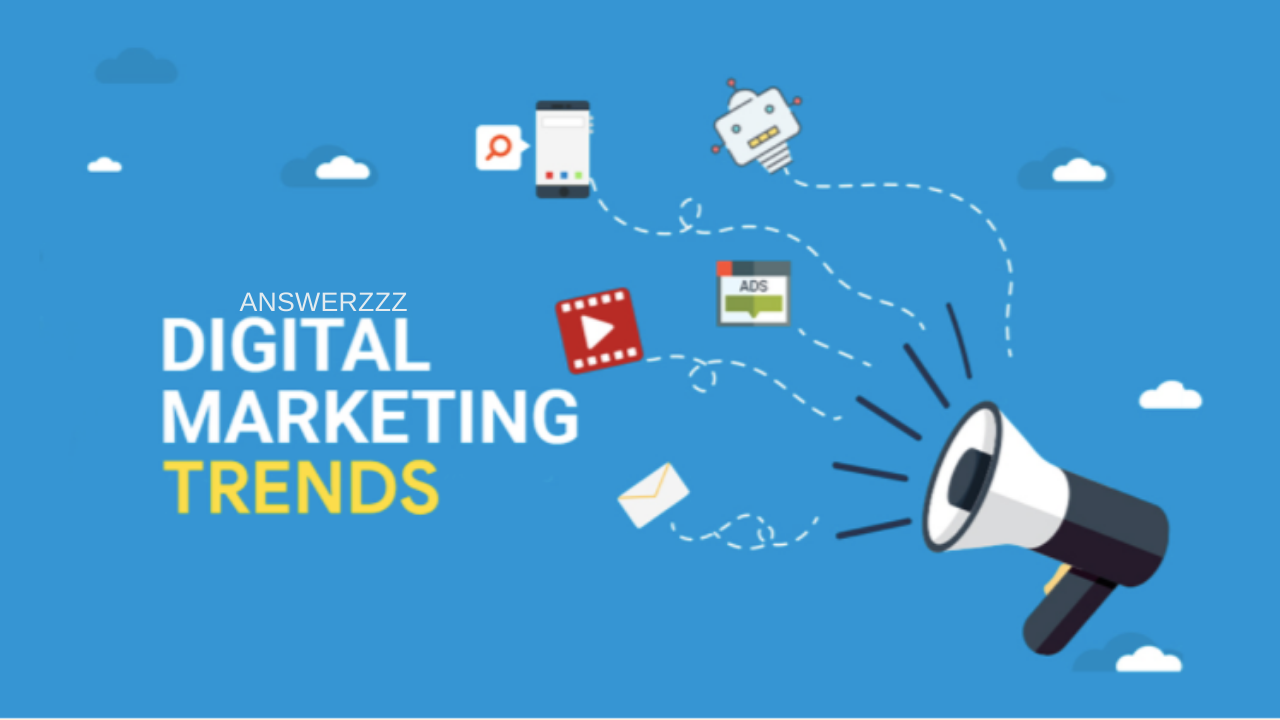The digital marketing landscape constantly evolves, with new technologies, platforms, and consumer preferences reshaping the industry each year. As we enter 2025, staying ahead of the curve means adopting cutting-edge strategies, leveraging advanced tools, and understanding shifts in customer behaviour. This guide explores the top digital marketing tips and tricks for 2025 to help businesses boost their visibility, connect with audiences, and drive sustainable growth.
1. Prioritize Hyper-Personalization
Hyper-personalization takes conventional personalization a step further by tailoring every part of the customer journey based on individual preferences, past behaviours, and real-time data. With advanced analytics and AI, brands can create more meaningful, relevant experiences.
Tips for Effective Hyper-Personalization:
- Leverage AI and ML: Use artificial intelligence (AI) and machine learning (ML) to analyze customer data, predict behaviours, and deliver personalized recommendations.
- Segment Beyond Demographics: Segment based on user behaviour, purchasing patterns, and interactions to go deeper than age, gender, or location.
- Implement Dynamic Content: Use dynamic content that changes according to each user’s preferences or behaviour. This could include personalized emails, product recommendations, and tailored ads.
2. Optimize for Voice Search
Voice search is rising as smart home devices and mobile voice assistants become more integrated into daily life. To capitalize on this trend, digital marketers must rethink their SEO strategies to focus on voice-optimized content.
How to Succeed with Voice Search:
- Use Conversational Keywords: Voice searches tend to be longer and more conversational. Incorporate natural, question-based phrases like “how,” “what,” “where,” and “the best way to.”
- Optimize for Featured Snippets: Voice assistants often pull information from featured snippets. Structure your content to answer questions clearly and concisely.
- Focus on Local SEO: Voice searches are often local, so make sure your local SEO game is strong by optimizing Google My Business and including relevant keywords.
3. Invest in Video Content with AI Integration
DIY Guide to Setting Up a Home Office with Minimal Gadgets and Maximum Efficiency
Video content continues to dominate, but in 2025, interactive and AI-enhanced video is taking centre stage. By integrating AI, brands can create videos that respond to user actions, boost engagement, and capture real-time insights.
Best Practices for Video Marketing in 2025:
- Incorporate AI-Driven Recommendations: AI can suggest related videos, provide clickable CTAs, or tailor video content based on viewer data.
- Use Interactive Video Elements: Add polls, quizzes, and clickable options within videos to encourage engagement and collect feedback.
- Produce Shoppable Videos: Make videos instantly shoppable by allowing users to click on featured products, which boosts both engagement and conversions.
4. Leverage Predictive Analytics
Predictive analytics is a game-changer for digital marketing, allowing brands to forecast customer behavbehaviourimize campaigns, and make data-driven decisions. With AI-powered predictive analytics, you can anticipate trends, improve targeting, and optimize ad spend.
Implementing Predictive Analytics:
- Use Customer Lifetime Value Predictions: Identify high-value customers and tailor marketing strategies to retain them.
- Apply Predictive Models to Ad Campaigns: Use historical data to predict which ads will perform best and allocate budgets accordingly.
- Enhance Content Personalization: Predictive analytics can help identify the types of content users are likely to engage with, enabling you to fine-tune your content strategy.
5. Adopt Privacy-First Marketing
With increasing privacy regulations and changes to data tracking policies, marketers must adopt privacy-first practices to build trust and remain compliant. Shifts like the phasing out of third-party cookies highlight the need for transparency and ethical data collection.
Key Privacy-First Marketing Strategies:
- Collect First-Party Data: Build your data strategy around first-party data collected directly from customers with consent.
- Implement Contextual Advertising: Instead of targeting individuals, use contextual advertising to target users based on the content they consume.
- Educate Customers on Data Usage: Be transparent about how you collect and use data, and offer users more control over their information.
6. Create Immersive Experiences with Augmented Reality (AR) and Virtual Reality (VR)
AR and VR offer unique ways to engage users, providing interactive, immersive experiences that stand out. Brands can use AR and VR to create virtual try-ons, interactive ads, and 3D product views that elevate the customer experience.
Ideas for AR and VR Marketing:
- Virtual Product Try-Ons: Use AR to allow users to “try on” products, like clothing, glasses, or makeup, before purchasing.
- Create VR Showrooms: Allow customers to tour virtual stores or showrooms to explore products in a fully immersive way.
- Interactive Advertisements: Make ads more engaging with AR experiences, such as interactive stories or 3D product models.
7. Focus on the Creator Economy and User-Generated Content (UGC)
How to Extend the Battery Life of Your Smartphone with These 8 Simple Tips
The creator economy, driven by influencers and brand advocates, is a powerful force. User-generated content (UGC) offers authentic, relatable content that resonates with audiences, while collaborations with creators help expand reach.
Strategies for Harnessing UGC and the Creator Economy:
- Encourage UGC Campaigns: Run social media challenges, giveaways, or hashtag campaigns that invite customers to share their experiences.
- Partner with Niche Influencers: Work with influencers who align closely with your brand values and have a loyal, engaged audience.
- Use UGC in Paid Ads: Featuring real customers or influencers in ads boosts credibility and social proof.
8. Embrace the Power of AI-Driven Content Generation
AI tools for content generation and curation are becoming more sophisticated, enabling marketers to produce high-quality, targeted content quickly. AI-driven content can enhance SEO, streamline production, and provide better personalization.
Best Practices for AI Content Generation:
- Automate Content Creation for SEO: Use AI tools to generate keyword-rich blog posts, social media content, and ad copy tailored to specific audience segments.
- Generate Real-Time Content Suggestions: AI-powered insights can recommend topics based on current trends, competitor analysis, and user behaviour.
- Balance Automation with Human Input: Ensure AI-generated content aligns with your brand voice by incorporating human editing and oversight.
9. Maximize Engagement with Omnichannel Marketing
An omnichannel approach creates a seamless customer experience across multiple platforms, helping to retain customers and build brand loyalty. Consistency is key—every touchpoint should reflect your brand message and provide value.
Steps for Effective Omnichannel Marketing:
- Ensure Cohesive Brand Messaging: Align messaging across all channels, including email, social media, website, and in-store interactions.
- Use Retargeting Across Platforms: Retarget users who have shown interest in your products, ensuring they see consistent messaging and relevant offers.
- Incorporate Mobile-Friendly Tactics: With mobile usage on the rise, prioritize mobile-optimized content and make the experience seamless across devices.
10. Utilize Social Commerce and Livestream Shopping

Social media platforms are evolving into full-fledged e-commerce ecosystems. Features like shoppable posts, in-app stores, and livestream shopping are transforming social media into a place to discover, shop, and engage.
Tips for Implementing Social Commerce:
- Integrate Shoppable Posts: Use shoppable tags and direct links to make it easy for users to buy directly from social media.
- Engage with Livestream Shopping Events: Host livestream events to showcase products, interact with audiences in real-time, and drive sales.
- Prioritize Customer Interaction: Respond to questions and comments on social platforms to build trust and drive conversions.
11. Leverage Chatbots and Conversational AI
AI-powered chatbots can handle customer queries 24/7, providing real-time support, collecting user data, and streamlining the customer journey. In 2025, conversational AI will be more capable of delivering personalized, human-like interactions.
Best Practices for Conversational AI:
- Use Chatbots for FAQs and Support: Free up human agents by letting chatbots handle routine questions and simple troubleshooting.
- Automate Lead Qualification: Use AI to qualify leads, determine intent, and pass on high-quality leads to your sales team.
- Optimize for Mobile: Since most users will interact via mobile, ensure your chatbot interface is mobile-friendly.
12. Harness the Potential of Blockchain for Transparency
Protecting Your Privacy Online: Simple Tips to Keep Your Data Safe
Blockchain technology is moving beyond finance and entering marketing as a tool for transparency, especially in ad verification and data security. Blockchain can help brands build trust, reduce fraud, and enhance data privacy.
Ways to Use Blockchain in Marketing:
- Enhance Ad Verification: Blockchain can verify ad impressions, ensuring they are seen by real people, which reduces ad fraud.
- Provide Transparent Customer Data Storage: Offer users more control over their data and ensure secure, traceable data storage.
- Use NFTs for Brand Engagement: Non-fungible tokens (NFTs) offer unique brand engagement opportunities, from virtual assets to exclusive brand experiences.
13. Prioritize Sustainability and Social Responsibility
Consumers are increasingly choosing brands that demonstrate a commitment to sustainability and social responsibility. Building an ethical, sustainable brand can enhance customer loyalty and improve public perception.
Tips for Sustainable Marketing:
- Showcase Eco-Friendly Practices: Highlight your brand’s sustainable practices, such as eco-friendly packaging, ethical sourcing, and carbon-neutral initiatives.
- Engage in Cause Marketing: Partner with causes that align with your values, and donate a portion of sales to charitable organizations.
- Be Transparent: Avoid “greenwashing” by being honest about your sustainability efforts and setting achievable goals.

The digital marketing trends of 2025 emphasize personalization, data privacy, and engagement. By adopting these strategies, brands can not only stay competitive but also create lasting connections with their audiences. From hyper-personalization to blockchain transparency, these tips and tricks will position your brand to thrive in a fast-paced digital world. Embrace innovation, focus on delivering value, and always keep the customer at the heart of your strategy to succeed in 2025 and beyond.





